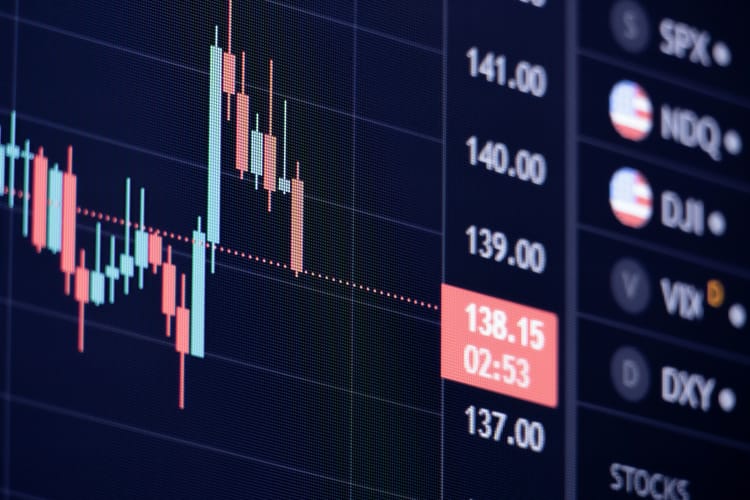How to Beat Information Overload with a Price Action Scanner

Consider a scenario,
“Imagine you have just started trading, With thoughts of wanting to be on top of everything, you downloaded a popular trading app and signed up for some (read many) financial news alerts you could find.
You know what will happen next?
Your phone will become a constant source of anxiety. Breaking news alerts, analyst upgrades and downgrades, and economic reports will buzz in one after another. Each notification will look urgent, but trying to keep up with the relentless stream will leave you feeling utterly confused.
And that’s not enough,
Suppose you hoped to glean insights from some experienced traders as well and therefore you also joined some online stock trading communities.
Here you go,
This constant chatter will become overwhelming. Hot stock tips will clash with dire warnings, and the emotional reactions swirling around every piece of news will eventually create more fear than clarity.
Moreover,
The app that you downloaded, may boast a vast array of technical indicators. Each promising a glimpse into the future. Tempted to unlock the secrets of the market, If you try using several at once. The conflicting signals and cluttered charts will make it impossible to identify any clear trends."
This is information overload.
You see,
The constant flow of information can be a double-edged sword for stock traders. While it offers valuable insights, it can also lead to paralysis by analysis.
There can be many Sources of this Information Overload
Remember the last time the Federal Reserve announced the interest rates? you might have noticed the constant bombardment of commentary from various news outlets, each with slightly different interpretations, making it difficult to form a cohesive view.
This is what the News and Market Updates comprising of Breaking news alerts, economic reports popping up every hour can leave you feeling.
In today's world, While researching a stock, you can have access to historical price charts, real-time quotes, company financial statements, analyst ratings, industry reports, and economic data. All at your fingertips.
While valuable, sifting through all this data to find the signal amidst the noise can be overwhelming.
Similarly,
Technical indicators like moving averages, MACD (Moving Average Convergence Divergence), and Relative Strength Index (RSI) can help identify trends.
However, with dozens of indicators available, each with its own set of parameters, you might find yourself chasing conflicting signals.
Imagine a chart cluttered with multiple lines representing different indicators. Will not make it really hard to identify clear patterns?
Social Media, Forums & Online communities are also a great way to learn from other traders and get different perspectives. However, at the same time, these platforms can be breeding grounds for rumors, misinformation, and emotional reactions.
For instance, a social media post claiming a "hot stock tip" could lead to a buying frenzy based on hype rather than solid research.
Not only this,
Understanding market sentiment (bullish or bearish) is also crucial.
But tracking various sentiment indicators like surveys, social media analysis, and options market data can be confusing, especially when these indicators contradict each other.
Also,
In today's interconnected world, you cannot escape the, Global Market Impact.
A political crisis in one region can ripple through global markets. For example, A trader focused solely on the US market might miss the impact of a European debt crisis, leading to unexpected losses. ( Although you can learn to deal with trading losses with this piece)
So,
What is the effect of this Information Overload?
How wiIl you feel after spending hours analyzing charts and news only to miss a clear buying signal because you were overwhelmed by the sheer volume of information.?
Certainly not a good feeling!
Similarly,
With so much data and conflicting viewpoints to consider, traders might get stuck in a cycle of overthinking and analysis. As a result, they may miss out on potential opportunities.
This Information overload can also lead to emotional decision-making.
Being bombarded with negative news or social media sentiment might cause you to panic sell a stock prematurely, even if the underlying fundamentals remain strong.
Conversely, constant bullish commentary could lead to chasing risky investments without proper due diligence due to Poor Risk Management.
While some information is crucial, getting caught up in every minor data point or social media chatter can make you miss out on bigger trends. Think of it like spending all your time deciphering technical indicators on a daily chart while a major industry shift unfolds, leaving you unprepared for the long-term implications.
Information overload can also erode your trading discipline. Sticking to a well-defined trading strategy becomes difficult when you're constantly bombarded with new information and market noise.
The Answer: A Price Action Scanner
You know what,
For many traders, price action is the purest form of market communication. Unlike other forms of analysis, which might rely on external factors or indicators, price action focuses solely on the movement of a stock's price over time. This philosophy believes that price reflects everything – company news, investor sentiment, economic data – all gets baked into the price movements.
A price action scanner is designed to automate this process of identifying potential trading opportunities based on price movements within a specific timeframe (often intraday).
It does this by
Focusing on Price Movement
You can even define the parameters through the
Customization option.
Yes,
Many scanners allow you to define specific parameters, such as price range, volume levels, and preferred chart patterns. This helps you tailor the scanner to your trading strategy and filter out irrelevant price movements. For example, you can set a scanner to only show stocks with a price increase exceeding 5% and a corresponding surge in volume, potentially indicating a breakout opportunity.
This also increase your Efficiency
saving you time from manually sifting through charts and price quotes. This allows you to focus on further research and analysis before making a trade. For example, with the use of Price action scanners, you can scan hundreds of stocks in seconds to find , for example, those exhibiting a bullish engulfing candlestick pattern, a potential reversal signal.
How to Configure your Price Action Scanner to avoid information overload
Ok,
So, A price action scanner can give you loads of benefits, but to take the full advantage, you should systematically configure it reap the maximum benefits
Here are some tips on how to configure your price action scanner to avoid information overload and make it a more effective tool for your trading:
The First Step is to
Focus on Your Strategy
It might look like stating the obvious, But this is an important aspect. In Setting Your strategy, you need to;
- Define Your Criteria: Before configuring your scanner, determine your trading style and strategy. There are certain criteria that you cant miss in your stock scanner. Are you a day trader looking for short-term breakouts, or a swing trader focusing on longer-term trends? Knowing your goals will help you set relevant scan parameters.
- Limit Scanned Markets/Sectors: Do you focus on stocks, forex, or cryptocurrencies? Don't try to scan every stock in every market. Focus on sectors or asset classes that align with your trading interests and risk tolerance. This keeps the scanner results manageable and relevant.
- Prioritize Price Patterns: Instead of scanning for every possible pattern, select a few high-confidence technical indicators that fit your strategy. This could be candlestick patterns like engulfing bars or moving average crossovers.
So,
Once you have got the results based on your chosen strategy,
The next step is to
Refine the Output
Don't get bogged down by minor price movements. Set filters for minimum price changes or specific price ranges relevant to your trading style. For example, a day trader might focus on stocks with a price jump exceeding 2%, while a swing trader might look for larger moves.
similarly,
You may also like to set Volume Filters
You can consider incorporating volume filters to identify stocks with strong buying or selling pressure alongside price movements. This can help differentiate genuine breakouts from random fluctuations.
And in the end,
Set Alerts, Do not Overwhelm
What it means is ,
Use scanner alerts strategically. Instead of getting notified for every single scan result, set alerts for specific scenarios that align with your high-probability setups.
Remember the Big Picture:
Don't Chase Every Signal
Scanners provide starting points, not guaranteed trades. Always conduct further research into companies flagged by the scanner before making any investment decisions.
and
Combine with Fundamentals
Technical analysis from scanners should be used in conjunction with fundamental analysis of the underlying companies. A strong price move might be less attractive if the company has poor financials or weak future prospects.
And always
Review and Refine
Regularly review your scanner settings and adjust them as needed. As your trading experience grows, your understanding of technical analysis and your trading strategy might evolve, so your scanner configuration should adapt accordingly.
and hold on
Here are some limitations to consider as well.
Scanner is Not a Guarantee
Scanners identify potential opportunities, but they don't guarantee successful trades. Combining scanner signals with fundamental analysis and proper risk management is still crucial.
Similarly,
They may generate False Signals
Price patterns can be misleading, and scanners may generate false signals. It's important to understand the limitations of technical analysis and confirm scanner signals with other indicators.
Scanner can also lead to
Over-reliance
Solely relying on scanners can lead to missing out on valuable fundamental developments. They should be used as a filtering tool, not a replacement for comprehensive research.
Overall, price action scanners can be a powerful tool for combating information overload in stock trading by streamlining your analysis and focusing on the most relevant price movements. Remember, they are most effective when used strategically and in conjunction with other trading tools and techniques.
Hoping that with the help of signals, you
Trade Smarter!





